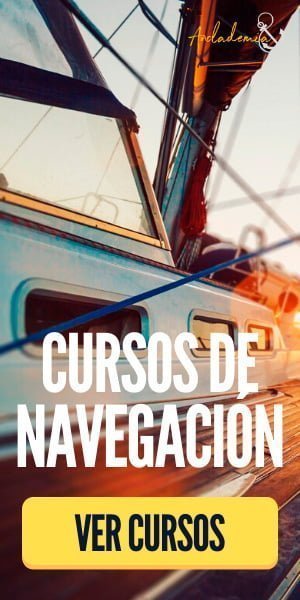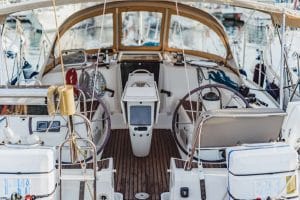When the good weather arrives, who doesn't want to go sailing? Whether to go fishing, spend the day anchoring or to skirt the coast enjoying the landscape and the sea breeze. Many people consider buying or renting a boat to enjoy the sea. However, they may have doubts about the types of recreational boats that exist and whether or not they require navigation permits. In this article we are going to clarify everything for you. You just have to keep reading!
What is a pleasure boat?
Recreational boats are considered those that, regardless of the means of propulsion, have hull length between 2.5 and 24 meters and whose use is for recreational and sporting purposes. Furthermore, the legislation currently in force establishes that recreational boats must not carry more than 12 passengers, excluding children under 1 year of age, the skipper, the crew and people who carry out any task related to the activity itself.

Types of pleasure boats
Now that we are clearer about what is considered a recreational boat, we are going to analyze the different types that exist. For this we have divided them into four groups.
Beach or floating boats
They are characterized by being very common anywhere on the coast. Many nautical schools use them to offer different activities at sea. In this first group we could include the canoes, kayaks, canoes, pedal skates, sailboards, inflatable boats and surfboardsF.
For this type of boat, no type of permit is necessary for navigation.
Boats
They are fast, light and agile boats. They are usually used to visit nearby places or to practice water sports such as fishing, tubing or water skiing. They are characterized by having a bow that is much wider than the stern. They usually require the PNB license to navigate. Although depending on its characteristics you may need the PER. We can subdivide the boats into two types:
- Semi-rigid boatss: Most have a console or jockey in which the boat's rudder will be installed.
- Inflatable boats: The skipper must be located in the stern, next to the engine to operate the boat, since it is not very common for them to have a console or jockey with its respective rudder.
Are you interested in: What are storms and anticyclones?
Jet skis
Who hasn't enjoyed a jet ski ride? It may be one of the best ways to explore the coast. There are different types of jet skis that, above all, are distinguished by the power of each of them.
Currently with the Navigation License You can navigate with any type of jet ski. We can group jet skis into two large groups:
- Jet Sky: its main characteristics is that it is single-seater. The pilot navigates standing up and cannot remain on top if the motorcycle is stationary. The engine can reach up to 165 HP.
- Jet skis (Runabout): can be multi-seater, two-seater, three-seater or four-seater. There is a wide variety of powers, from 50 hp to 350 hp as standard.
Large sailing boats
The sea breeze is your navigation engine. Therefore, the structure of the boat is essential for this quality to become a reality: it is composed of two hulls joined by a skeleton that provide perfect stability for sailing without problems.
The catamaran is the best known. In recent years it has become very fashionable. We can find various types. Those whose movement depends solely on the conjunction of the sea breeze with the sail and others that have an engine in each hull.
Yachts
The yacht is the most luxurious recreational vessel. It offers a wide variety of nautical options such as sailing to greater distances. Perhaps it is one of the most desired boats by sailing lovers.
As we have already mentioned, floating or beach boats do not require any type of qualification to navigate. The same applies to motor boats that do not exceed 11 kilowatts and 5 meters in length and sailing boats up to 6 meters in length. To these conditions we must add that you cannot navigate more than 2 miles from the coast.
The rest of the boats that exceed these characteristics will require a license or navigation card. At Anclademia we offer theoretical and practical navigation courses with which you can fulfill your dream and govern a pleasure boat.




